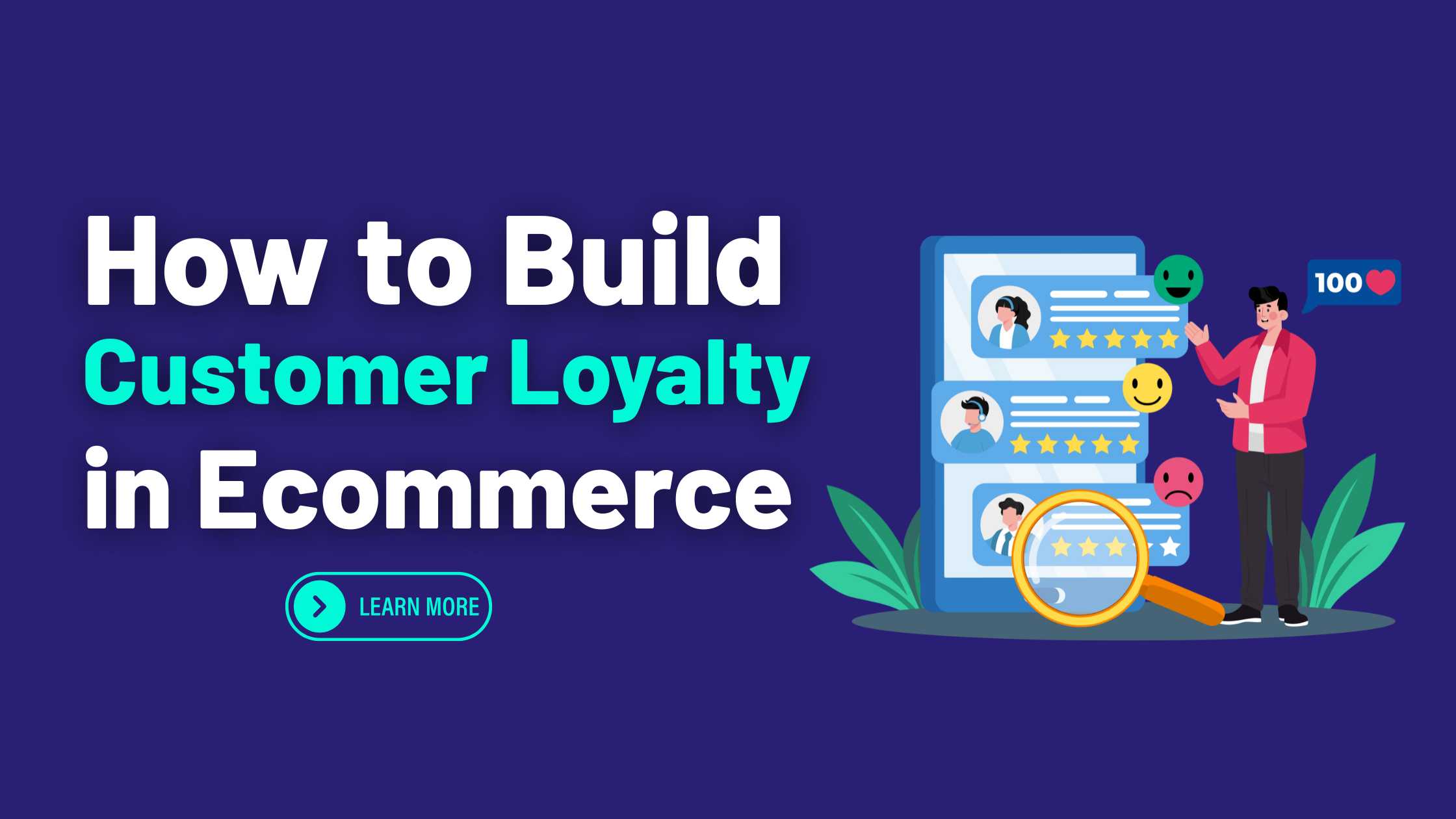Build Customer Loyalty in Ecommerce : Building customer loyalty in ecommerce has become one of the most important success factors for online businesses in 2025. In a world where acquiring new customers is getting more expensive and competition is growing fiercer, the real profit lies in turning one-time buyers into loyal, returning customers. Ecommerce customer retention strategies now go far beyond offering discounts. Brands must now focus on personalized experiences, emotional connection, trust-building, and long-term engagement. This comprehensive guide dives deep into how to build customer loyalty in ecommerce in 2025, backed by the latest trends, tools, and proven strategies.
Table of Contents
Customer loyalty in ecommerce refers to the likelihood of a customer to repeatedly buy from a brand over a long period. Loyal customers not only increase revenue but also become brand ambassadors, spreading positive word-of-mouth and improving brand visibility. In 2025, customer loyalty is shaped by personalization, fast fulfillment, exceptional support, sustainability, community engagement, and data-driven decision-making.
The rise of ecommerce platforms like Shopify, WooCommerce, BigCommerce, and Amazon has made it easier than ever to launch an online store. However, retaining customers requires a sophisticated and strategic approach. In today’s hyper-competitive market, ecommerce businesses that ignore customer loyalty are likely to see rising churn rates and falling profits. Let’s explore the key components of building ecommerce customer loyalty in 2025.
1. Personalization Is the Cornerstone of Customer Loyalty

One of the biggest ecommerce trends in 2025 is hyper-personalization. Customers expect ecommerce websites to know their preferences, anticipate their needs, and make relevant recommendations. Ecommerce businesses must leverage AI and customer data to create personalized shopping experiences that increase engagement and retention.
Personalization in ecommerce includes personalized product recommendations, dynamic website content, custom email campaigns, personalized SMS alerts, and behavior-based loyalty offers. Tools like Klaviyo, Omnisend, and Dynamic Yield help brands automate and deliver customized experiences at scale.
Also Read : Email Marketing Automation for Ecommerce Stores
When customers feel understood and valued, their emotional connection to the brand increases, leading to stronger loyalty.
2. Build an Ecommerce Loyalty Program That Rewards and Retains
An effective ecommerce loyalty program in 2025 goes beyond basic point systems. Customers want to feel appreciated and rewarded for their loyalty. Loyalty programs must be strategic, gamified, and emotionally engaging.
Types of ecommerce loyalty programs include:
- Point-Based Programs: Customers earn points for every purchase and redeem them for discounts or products.
- Tiered Loyalty Programs: Offering different levels like Silver, Gold, and Platinum encourages customers to spend more to unlock better rewards.
- Paid Membership Programs: VIP memberships offer exclusive benefits like free shipping, early access, and premium support.
- Referral-Based Rewards: Giving incentives for referring friends increases customer base and trust.
Ecommerce loyalty platforms like Smile.io, Yotpo Loyalty, and Rise.ai allow easy integration and automation of such programs. Loyalty programs drive higher Customer Lifetime Value (CLTV), reduce customer churn, and increase engagement.
3. Exceptional Customer Experience Drives Long-Term Loyalty
Customer experience (CX) is at the heart of ecommerce loyalty. In 2025, customers expect fast, seamless, and intuitive shopping journeys. Any friction in the purchase process—slow loading times, confusing interfaces, or poor support—can result in cart abandonment or loss of trust.
Top customer experience tactics in ecommerce include:
- Lightning-fast page speed and mobile responsiveness
- Clear product descriptions and high-quality images
- One-click checkout and multiple payment options
- 24/7 customer service via live chat, WhatsApp, and email
- Hassle-free returns and transparent policies
A positive experience at every touchpoint ensures that customers come back again and again. Brands that invest in UX/UI design, automation, and real-time support tools outperform those that do not.
4. Implement AI-Powered Chatbots and Smart Assistance

AI-powered customer service has revolutionized ecommerce. Chatbots and virtual assistants powered by GPT models can answer queries instantly, guide customers through the buying process, and provide post-sale support.
Ecommerce chatbots help in:
- Order tracking and return initiation
- Product recommendation based on previous behavior
- Handling FAQs instantly
- Reducing response time and increasing satisfaction
Integrating chatbots with platforms like Facebook Messenger, WhatsApp, or your ecommerce site improves convenience and makes the customer feel valued, which directly impacts loyalty.
5. Fast and Free Shipping Builds Trust and Retention
One of the primary reasons customers choose ecommerce giants like Amazon is the promise of fast and free shipping. In 2025, fast delivery is no longer a luxury—it’s an expectation. Customers expect next-day or even same-day delivery.
To boost ecommerce loyalty, brands should:
- Offer free shipping above a certain order value
- Provide accurate delivery timelines
- Send real-time tracking notifications
- Simplify the return and exchange process
Reliable shipping builds trust, which in turn fosters loyalty. Fulfillment partners and third-party logistics platforms like Shiprocket, Delhivery, or EasyShip can help ecommerce businesses meet these expectations affordably.
6. Leverage Data Analytics to Understand and Retain Customers
Data is one of the most powerful tools for improving customer loyalty in ecommerce. By analyzing customer behavior, purchase history, and feedback, ecommerce brands can make better decisions, launch personalized campaigns, and detect churn early.
Key metrics to track include:
- Repeat Purchase Rate
- Average Order Value (AOV)
- Customer Lifetime Value (CLV)
- Customer Retention Rate
- Cart Abandonment Rate
- Net Promoter Score (NPS)
Platforms like Google Analytics 4, Mixpanel, and Hotjar provide valuable customer insights. Ecommerce CRM systems can segment users and automate retention campaigns for maximum impact.
7. Launch Subscription-Based Ecommerce Models
Subscription ecommerce is growing rapidly in 2025. From beauty boxes to pet food, customers love the convenience of auto-renewing deliveries. Subscription models ensure steady revenue while creating a routine that encourages long-term loyalty.
Types of ecommerce subscriptions include:
- Replenishment (for consumables)
- Curated Boxes (personalized selections)
- Access Subscriptions (exclusive content or services)
Platforms like Recharge, Bold Subscriptions, and Skio help ecommerce stores integrate subscription billing and manage customer experience. Subscriptions reduce churn and increase customer touchpoints, which results in higher loyalty.
8. Engage Customers with Retargeting and Retention Marketing
Retargeting is essential to bring back customers who’ve shown interest in your products. Retention marketing ensures that existing customers stay engaged over time.
Effective channels include:
- Email Marketing: Send personalized product recommendations, abandoned cart reminders, loyalty updates, and order follow-ups.
- SMS Marketing: Deliver exclusive offers, delivery updates, and time-sensitive promotions.
- Push Notifications: Alert users about flash sales, restocks, or wishlist availability.
Automated workflows through Klaviyo, Mailchimp, or Omnisend can significantly improve customer retention rates.
9. Create a Community Around Your Brand
In 2025, ecommerce brands that build strong communities enjoy more loyal customers. A brand community gives users a sense of belonging and creates opportunities for interaction beyond the transaction.
Ways to build an ecommerce community:
- Start a private Facebook group or Discord server
- Encourage user-generated content (UGC) on Instagram or TikTok
- Host live sessions, product launches, or AMAs
- Reward community participation with points or recognition
When customers identify with your brand’s mission and values, they form emotional bonds that drive long-term loyalty.
10. Encourage and Display Customer Reviews and Testimonials
Social proof is more important than ever. Customers rely on reviews to evaluate the trustworthiness of a brand. Having thousands of satisfied customer reviews increases conversion rates and encourages new buyers to return.
Best practices include:
- Asking for reviews post-purchase
- Offering small incentives for honest feedback
- Displaying reviews prominently on product pages
- Using photo and video reviews for authenticity
Review platforms like Trustpilot, Loox, or Judge.me integrate easily with ecommerce platforms and help gather and display reviews seamlessly.
11. Use Ethical Branding and Sustainability to Win Trust
Modern consumers are value-driven. Brands that showcase ethical practices and sustainability earn more loyalty than those that do not. In 2025, ecommerce customers are choosing to support companies that are transparent and socially responsible.
Ethical loyalty drivers:
- Eco-friendly packaging
- Ethical sourcing and fair trade
- Carbon-neutral delivery options
- Charitable donations for every purchase
Highlighting your sustainability efforts through your website, packaging, and emails deepens your brand-customer relationship.
12. Offer Gamified Experiences and Micro-Rewards
Gamification increases customer engagement. In 2025, ecommerce platforms use gaming mechanics like points, levels, badges, and challenges to keep customers involved.
Gamification strategies include:
- Spinning wheels for discounts
- Daily login bonuses
- Achievements for milestones like 5th or 10th purchase
- Surprise rewards and treasure hunts
Gamification taps into psychology to make shopping more fun and habit-forming, thereby increasing retention and customer loyalty.
Build Customer Loyalty in Ecommerce – Conclusion:

Customer loyalty in ecommerce is not just a tactic—it’s a strategy for sustainable growth. In 2025, successful ecommerce brands invest heavily in building emotional, personalized, and trustworthy relationships with their customers.
By focusing on personalized experiences, loyalty programs, fast fulfillment, ethical branding, and community building, you can drastically improve customer retention and grow your revenue. Remember, customer acquisition is expensive, but customer loyalty is priceless.
Buy Now : Email Marketing Mastery Course
Whether you’re running a small DTC store or scaling a large ecommerce operation, the key to long-term profitability lies in customer retention. Implement these strategies now, and your business will not only survive but thrive in the evolving ecommerce landscape.
Disclaimer: This article is for informational purposes only. Ecommerce strategies and tools evolve rapidly. Please evaluate platforms and practices based on your business goals and consult experts if necessary.
Keywords : Build Customer Loyalty in Ecommerce – Build Customer Loyalty in Ecommerce 2025 – Build Customer Loyalty in Ecommerce India , Build Customer Loyalty in Ecommerce Guide








